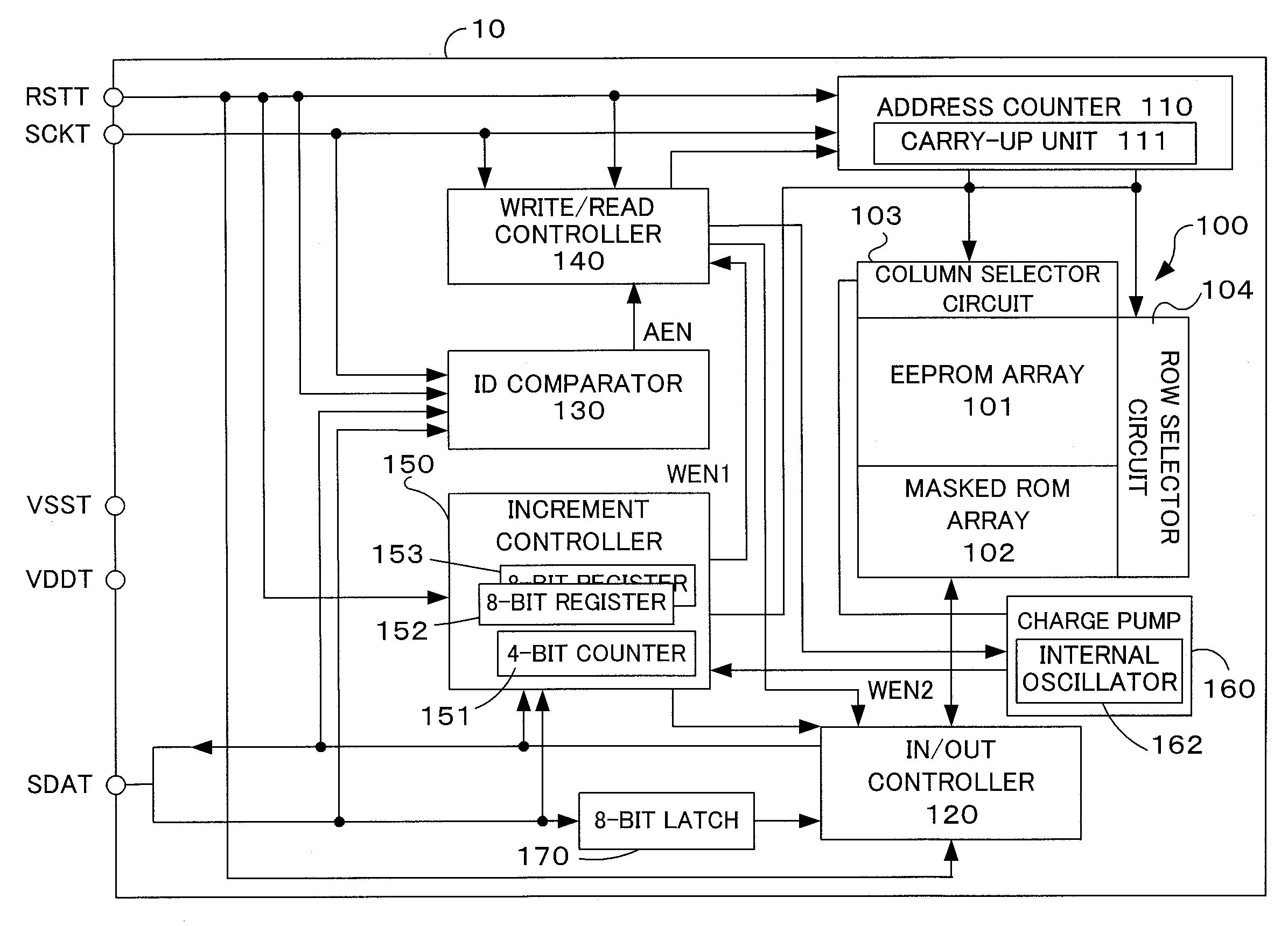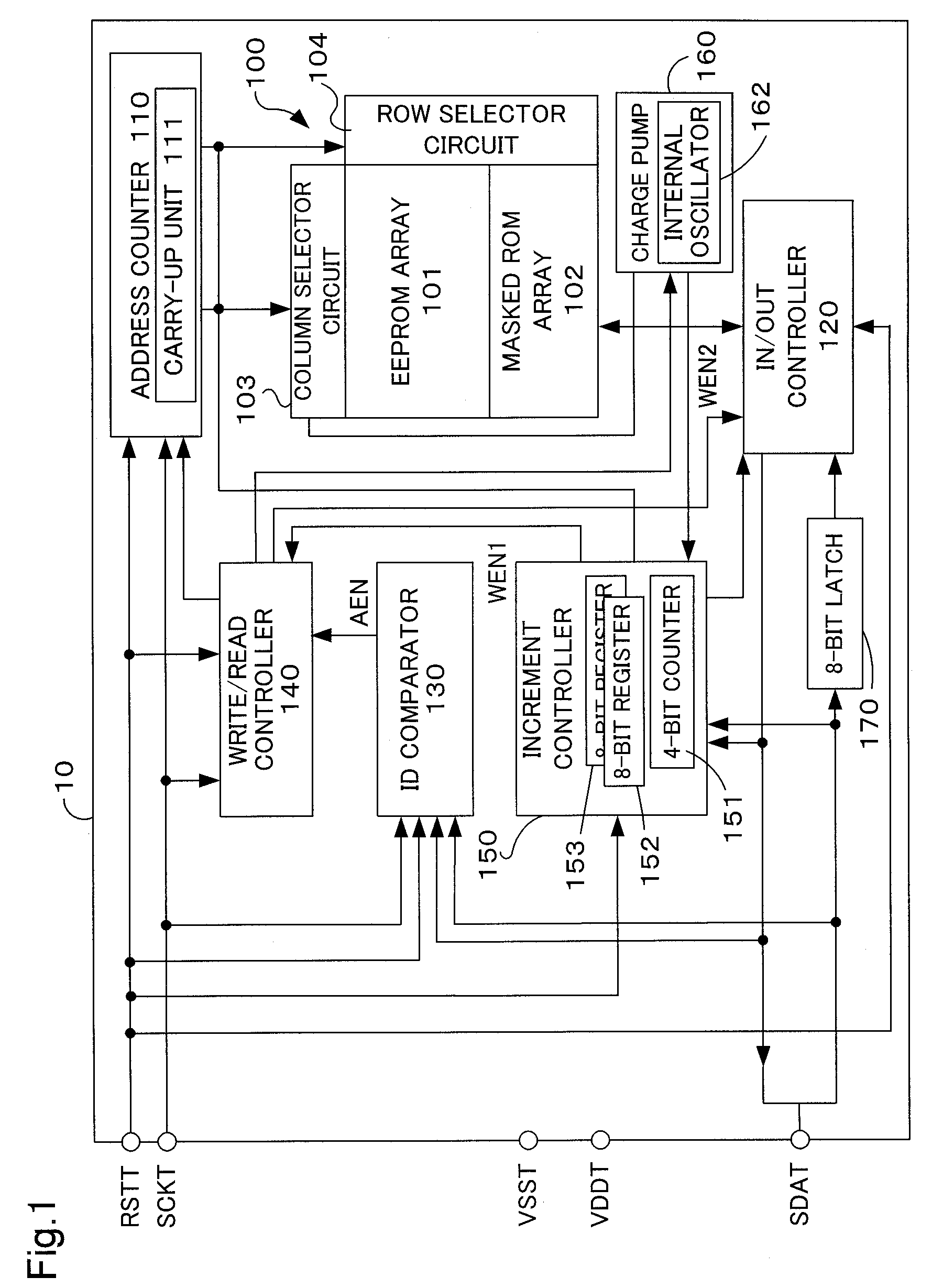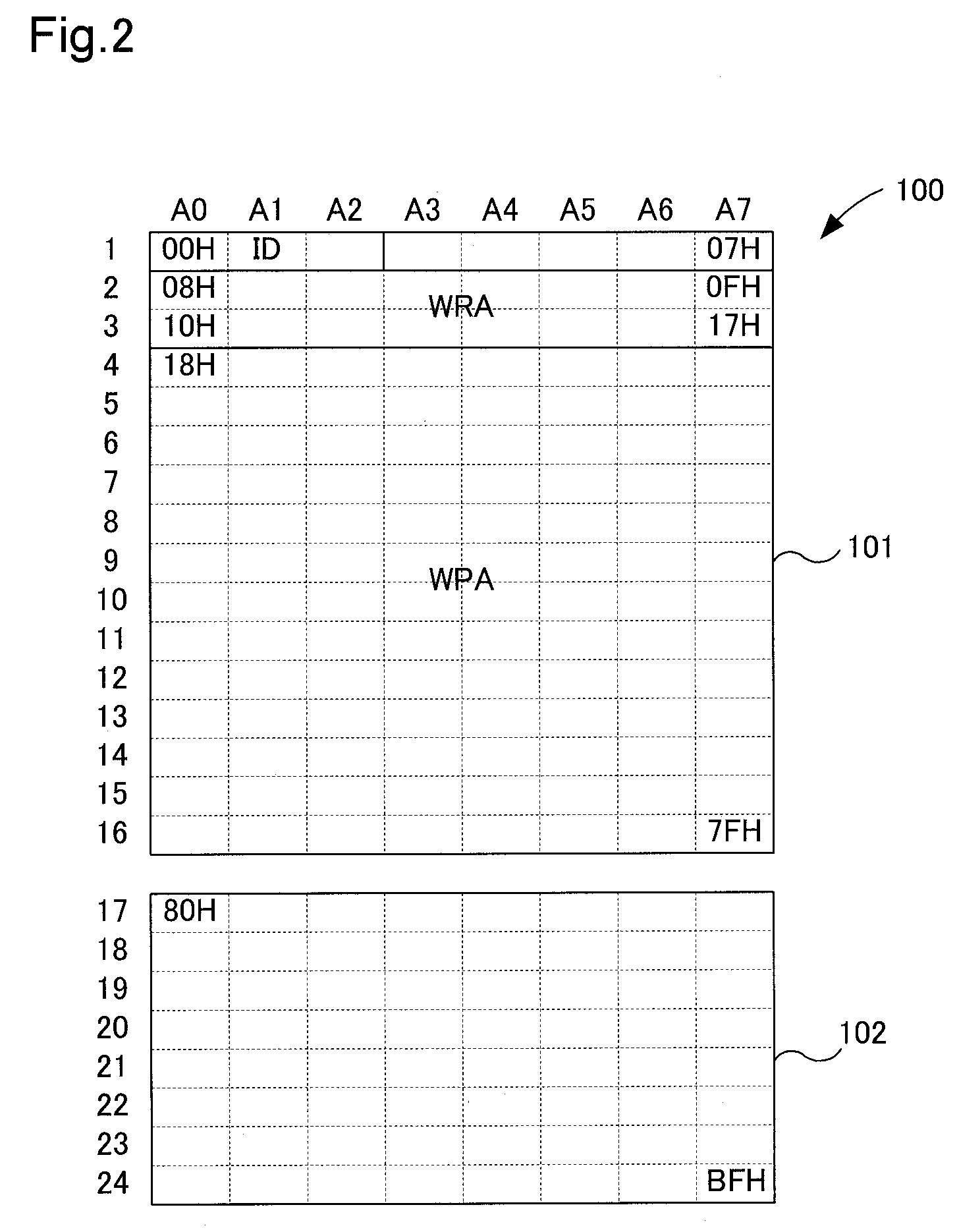Semiconductor memory device
- Summary
- Abstract
- Description
- Claims
- Application Information
AI Technical Summary
Benefits of technology
Problems solved by technology
Method used
Image
Examples
Embodiment Construction
[0025] The semiconductor memory device according to the present invention, and the address control method in the semiconductor memory device, will be explained below based on example of embodiment, while referencing the figures.
Structure of the Semiconductor Memory Device
[0026] The structure of the semiconductor memory device 4 according to the present example of embodiment will be described in reference to FIG. 1 and FIG. 2. FIG. 1 is a block diagram illustrating the functional internal structure of a semiconductor memory device according to the present example of embodiment. FIG. 2 is an explanatory diagram illustrating schematically an internal structural map of a memory array provided in the semiconductor memory device according to the present example of embodiment.
[0027] In the present example of embodiment, a semiconductor memory device 10 is a sequential access-type memory device that does not require the inputting of address data from the outside to specify the address f...
PUM
 Login to view more
Login to view more Abstract
Description
Claims
Application Information
 Login to view more
Login to view more - R&D Engineer
- R&D Manager
- IP Professional
- Industry Leading Data Capabilities
- Powerful AI technology
- Patent DNA Extraction
Browse by: Latest US Patents, China's latest patents, Technical Efficacy Thesaurus, Application Domain, Technology Topic.
© 2024 PatSnap. All rights reserved.Legal|Privacy policy|Modern Slavery Act Transparency Statement|Sitemap



